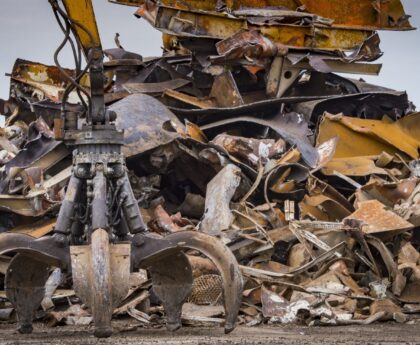When it comes to ensuring vehicle safety, wheel chocks are indispensable tools. However, not all wheel chocks are created equal. Different scenarios call for specific types of chocks to effectively prevent unintended vehicle movement. In this article, we’ll explore the various types of wheel chocks available and when to use them, empowering you to make informed decisions and keep your vehicles secure in any situation.
Rubber Wheel Chocks
Rubber wheel chocks are among the most common and versatile options available. They offer excellent grip, durability, and resistance to wear. Rubber chocks are suitable for a wide range of applications, including:
1.1 Passenger Vehicles and Light Trucks
Rubber chocks are ideal for standard passenger vehicles and light trucks. They provide sufficient grip on most surfaces and effectively prevent rolling or movement.
1.2 Parked Trailers and RVs
When parking trailers or recreational vehicles (RVs), rubber wheel chocks are a reliable choice. They offer stability, preventing the trailer or RV from shifting during loading/unloading or when stationary.
1.3 Industrial and Commercial Use
Rubber chocks find extensive use in industrial and commercial settings. They work well for securing machinery, equipment, and heavy vehicles such as forklifts and construction vehicles.
Metal Wheel Chocks
Metal wheel chocks are renowned for their durability and strength. They are often constructed from steel or aluminium and are well-suited for heavy-duty applications. Consider using metal chocks in the following scenarios:
2.1 Large Trucks and Commercial Vehicles
Heavy trucks, commercial vehicles, and semi-trailers require robust wheel chocks to withstand their weight and power. Metal chocks provide the necessary strength and stability to keep these vehicles in place.
2.2 Off-Road and Construction Vehicles
Off-road vehicles and construction machinery demand wheel chocks capable of withstanding rough terrain and extreme conditions. Metal chocks excel in these environments, offering superior durability and reliability.
2.3 Loading Docks and Sloped Surfaces
In areas such as loading docks or sloped surfaces, where there is an increased risk of vehicle movement, metal wheel chocks provide an added layer of security. Their strength and resistance to slippage make them an excellent choice.
Wood Wheel Chocks
Wooden wheel chocks, though less common than rubber or metal ones, still have their place in certain situations. They are lightweight, cost-effective, and can be easily customized. Consider using wood chocks in the following scenarios:
3.1 Recreational Boats and Small Watercraft
Wood chocks are often used to secure recreational boats and small watercraft. Their buoyancy and affordability make them a practical choice for maritime applications.
3.2 Agricultural Vehicles and Equipment
In agricultural settings, where tractors and other farm vehicles are frequently parked on uneven terrain, wood wheel chocks provide stability and prevent movement.
3.3 Temporary and DIY Solutions
Wood chocks are also useful for temporary or do-it-yourself (DIY) situations. Safety-first noted that If you find yourself in need of a quick and inexpensive solution, crafting wood chocks can be a practical option.
Specialty Wheel Chocks
Beyond the traditional materials, there are specialty wheel chocks designed for specific applications. Some examples include:
4.1 Aircraft Wheel Chocks
Aircraft wheel chocks are specially designed to meet the unique needs of airplanes. They are often made from heavy-duty rubber or composite materials, ensuring a secure hold on aircraft wheels during parking and maintenance.
4.2 Oilfield and Mining Chocks
Oilfield and mining operations require wheel chocks that can withstand the extreme conditions of these industries. These chocks are typically constructed with high-strength materials to handle heavy loads and rugged environments.
4.3 Railroad Wheel Chocks
Railroad wheel chocks are designed specifically for securing trains and railcars. They are engineered to resist high levels of force and provide optimal stability on railroad tracks.
Conclusion
Choosing the right type of wheel chock is crucial for ensuring the safety and security of your vehicles and equipment. Rubber chocks are versatile and widely applicable, metal chocks excel in heavy-duty scenarios, wood chocks offer a lightweight and cost-effective solution, while specialty chocks cater to specific industries.
By understanding the different types of wheel chocks and when to use them, you can make informed decisions and select the appropriate chocks for each situation. Remember, investing in the right wheel chocks is an investment in the safety and protection of your valuable assets.


